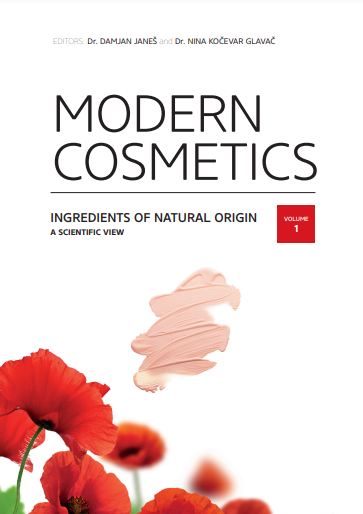‘Ngredients Of Natural Origin’ PDF Quick download link is given at the bottom of this article. You can see the PDF demo, size of the PDF, page numbers, and direct download Free PDF of ‘Cosmetic Formulation’ using the download button.
Pharmaceutical Cosmetics Book PDF Free Download

Modern Cosmetics
Though satirical and intentionally humorous, this colourful excerpt from Thomas Tuke’s anti-cosmetic tract betrays an anxiety about woman’s fundamental lack of readability.
Tuke reveals an implicit distrust of artifice. To understand the relationship between cosmetic drama and early modern society, it is necessary to get to grips with the cultural reception of beautification found within the non-dramatic writing of the period.
I want to suggest that from a wide range of early modern texts, what we see emerging is the formation of a culture of cosmetics that found its visual footing on the stage.
In the oppositional texts there are three primary objections to cosmetics: the belief that alteration of the body is a crime against God.
The ethnocentric fear of foreign ingredients and commodities of a cosmetic nature; and the necromantic effect of face paint, which suggested not only the physical unreliability, but also the poisonous and contaminative nature of women and even art.
Anti-cosmetic diatribes unearth a deeply rooted fear not just of cosmetic paint and its potential toxicity, but rather of what it signifies: gender, theatricality, race and the performative nature of political power.
According to their activity, retinoids are classified as follows: retinoic acid > retinal > retinol >
retinyl esters; but the exact opposite according to their tolerance.
Retinoic acid is the most active.but also the most irritating to the skin, causing erythema and exfoliation of the stratum corneum.
The effects of other retinoids depend on metabolism, as metabolites that are structurally closer
to retinoic acid have a higher activity, but are more irritating to the skin.
In the European Union,retinoic acid is on the list of substances that are prohibited in cosmetic products, and may only be used under dermatological control.
Retinol and its esters (retinyl palmitate and retinyl propanoate) and retinal are used in cosmetic products.
RETINOIC ACID
Retinoic acid is used in dermatology for the dermal treatment of acne. It also improves signs
of skin damage due to exposure to the sun (photoageing), e.g. small and distinct wrinkles and
hyperpigmentation.
Significant irritation and dryness of the skin are the main side effects of the treatment with retinoic acid, and thus limit its broader use.
RETINAL
Retinal is rapidly metabolised in epidermal cells when applied to the skin. The majority is converted to retinol and retinyl esters, while a lesser amount is oxidised into retinoic acid.
Of all the retinoids for dermal use, retinal may be the most effective in supplying the skin with retinol and its esters, which represent a storage form. Retinal is a precursor of retinoic acid, and does not bind to nuclear retinoid receptors.
It can be used to achieve the controlled delivery of retinoic acid to the skin and thus better tolerance. It is well-tolerated by the skin because it is less irritating than retinoic acid. The antibacterial effect of retinal has been demonstrated in vitro and in vivo.
Retinal is not commonly used in cosmetic products. It is, however, effective against photoageing, as it improves the appearance of fine and deep wrinkles, hyperpigmentation and roughness of facial skin. It is used to treat acne in dermatology.
RETINOL AND RETINYL ESTERS
The effects of retinol and its esters depend on local conversion into retinoic acid.
Retinyl palmitate, retinyl acetate and retinyl propanoate hydrolyse into retinol under the influence of esterases in the skin, while retinol oxidises via retinal into retinoic acid.
A slow metabolism ensures the controlled delivery of retinoic acid, but also results in a modest effect.
Retinol is less effective than retinoic acid. In order to achieve similar effects to those of retinoic acid, the concentration of retinol must be approximately ten times higher.
Retinol and its esters cause less skin irritation than retinoic acid and are used in appropriate concentrations as cosmetically active ingredients.
The use of retinol on the skin increases the thickness of the epidermis and stimulates the formation of collagen and glycosaminoglycans, which retain moisture in the skin. Retinol also normalises the keratinisation of the skin.
It is used to reduce facial wrinkles, improve skin elasticity and maintain a youthful appearance. Cosmetic products with retinol are therefore suitable for the care of dry and mature skin.
Retinol is very unstable, as it is sensitive to oxygen and ultraviolet light.
As a cosmetically actie ingredient, it is only effective in the appropriate concentration and in the appropriate packaging of a cosmetic product, which should have as little contact with light and air as possible (e.g. opaque containers with a small opening or airless push containers).
These conditions are, in fact, met by very few cosmetic products. Retinyl esters are more stable than retinol, and are therefore found more frequently in cosmetic products.
Retinol concentrations of up to 0.3%, and retinyl ester concentrations of up to 0.55% are recommended in cosmetic products for skin care.
Higher concentrations irritate the skin and are not suitable for cosmetic use.
| Author | – |
| Language | English |
| No. of Pages | 26 |
| PDF Size | 2 MB |
| Category | Health |
| Source/Credits | moderncosmethics.com |
Pharmaceutical Cosmetics Book PDF Free Download
